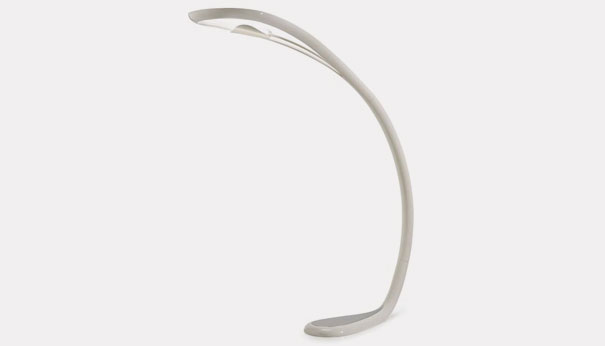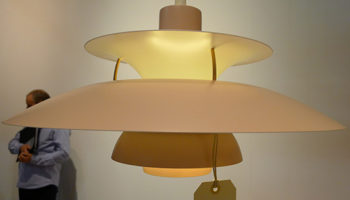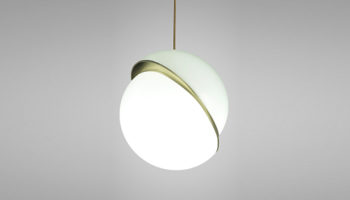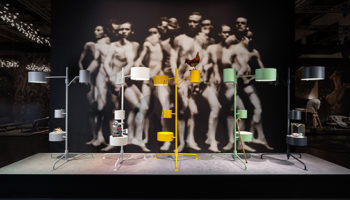The Semjase Floor Lamp by Sandro Santantonio for Lucente
Italian manufacturer Lucente says that “technology, design and poetry are the guide lines that have taken to the planning of this floor lamp, having big dimensions, and designed to be an elegant piece of furniture.” That statement is undoubtedly true, since designer Sandro Santantonio’s Semjase floor lamp eschews the often-dominant functionality factor in favor of a big, bold, broad, and sweeping aesthetic.
Semjase. Designed by Sandro Santantonio for Lucente.
As a writer, I have a particular affection for the piece, since it both sounds like and resembles a mark of punctuation (one of my favorites incidentally, the under-used and oft-abused semi colon, though it also could pass for a comma). Semjase relies on a cantilevered construction; its over-sized arch and prodigal head extend outward just enough to be balanced by its modest base.
Lucente compares Semjase to an archer’s chosen piece of equipment: “shape of a bow, slender and fluid, offers a very wide lighting, thanks to the adjustable lighting head. From the base, looking like a drop, develops the hollow body of the lamp, getting to the head, that has too the shape of a drop.” If this evocative yet somewhat cryptic description leaves you a bit flummoxed, perhaps a bit of research will enlighten. Turns out “Semjase” is named after a purported extraterrestrial from the Pleiades region, who ostensibly communicated (and continues to communicate) with Swiss farmer Billy Meier for going-on 35 years now. Whether you believe Meier’s accounts (and pictures) of otherworldly contact, or find them to be an extravagant fakery, the connection accounts for the futuristic aesthetic, as well as the unusual profile.
One of Meier’s claims is that the alien race with which he is in contact exists in a slightly altered timeline (a fraction of a second in the future). This factoid might explain why Semjase’s light source juts out ever-so-slightly from its structural support, peering forth mere inches into the unknown space and time of what’s to come.
Via Contemporist






Leave a Reply